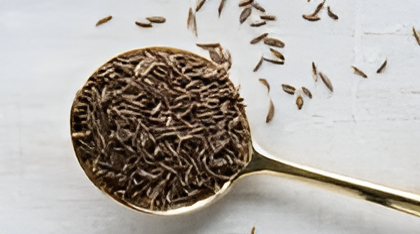
The Wonders of Caraway: A Comprehensive Guide
Caraway, scientifically known as Carum carvi, is a flowering plant in the family Apiaceae. This herbaceous plant is known for its distinctive, aromatic seeds that have been used in culinary and medicinal applications for centuries. Often associated with European cuisines, caraway seeds have a unique flavor profile that is both earthy and slightly sweet, making them a popular choice in various dishes.
Culinary Uses of Caraway
Caraway seeds are often found in a variety of dishes, particularly in Central European and Scandinavian cuisines. They are a staple in rye bread, adding depth and complexity to the flavor. The seeds are also used in dishes like sauerkraut and in various meat preparations. Their slightly peppery and anise-like taste makes them an excellent seasoning for savory dishes, soups, and stews.
In addition to their use in bread and savory dishes, caraway seeds can also be incorporated into desserts. They pair well with apples and can be used in sweet pastries or infused into syrups for cocktails. This versatility makes caraway a valuable ingredient for both home cooks and professional chefs alike.
Health Benefits of Caraway
Caraway is not only prized for its culinary uses but also for its numerous health benefits. The seeds are rich in essential oils, vitamins, and minerals, making them a great addition to a balanced diet. Some of the health benefits associated with caraway include:
- Digestive Aid: Caraway seeds have traditionally been used to alleviate digestive issues. They can help relieve bloating, gas, and indigestion, making them a common ingredient in herbal teas designed for digestive health.
- Antioxidant Properties: The seeds contain compounds that have antioxidant effects, which can help combat oxidative stress in the body. This is important for overall health and may reduce the risk of chronic diseases.
- Anti-Inflammatory Effects: Caraway has been shown to possess anti-inflammatory properties. Incorporating it into your diet may help reduce inflammation in the body, which is linked to various health conditions.
- Potential Antimicrobial Activity: Some studies suggest that caraway may have antimicrobial properties, which can help protect against certain pathogens and promote gut health.
- Rich in Nutrients: Caraway seeds are a good source of essential nutrients, including fiber, iron, and magnesium, all of which contribute to overall health and well-being.
Growing Caraway
For those interested in gardening, growing caraway can be a rewarding experience. Caraway is a biennial plant, which means it takes two years to complete its life cycle. Watering: Keep the soil hydrated, particularly when it’s dry. Avoid overwatering, too, since this can cause root rot.
- Soil Preparation: Choose a well-drained area with rich, fertile soil. You can enhance soil quality by adding compost.
- Sowing Seeds: Plant caraway seeds in the spring or fall. They should be sown about 1/4 inch deep. Thin the seedlings to ensure proper spacing as they grow.
- Watering: Keep the soil moist, especially during dry periods. However, avoid overwatering, as this can lead to root rot.
- Harvesting: In the second year, the plant will flower and produce seeds. Harvest the seeds when they turn brown but before they fall off the plant.
Caraway in Different Cuisines
Caraway’s unique flavor has made it a beloved ingredient in various international cuisines. In German cooking, caraway is often used in sausages and cabbage dishes. In Irish cuisine, it’s commonly found in soda bread. Meanwhile, in Middle Eastern cuisine, caraway seeds are used in spice blends and as a seasoning for meats.
In addition to savory dishes, caraway is also featured in beverages. For instance, it can be found in certain herbal teas and is sometimes used to flavor spirits like aquavit.
How to Use Caraway Seeds
If you’re looking to incorporate caraway into your cooking, here are some ideas:
- Seasoning: Use whole or ground caraway seeds to season roasted vegetables, meats, or fish.
- Baking: Add caraway seeds to bread dough or sprinkle them on top of baked goods for added flavor.
- Soups and Stews: Incorporate caraway into soups, especially those with cabbage or root vegetables.
- Pickling: Use caraway seeds in pickling brines for an added depth of flavor.
Caraway in Herbal Remedies
In addition to its culinary uses, caraway has a long history in traditional herbal medicine. It is often used in teas and tinctures to support digestive health and reduce gas. The seeds can be chewed directly to relieve digestive discomfort or brewed into a tea for a soothing effect.
Conclusion
Caraway is a versatile herb that offers a unique flavor and a range of health benefits. Whether used in cooking, herbal remedies, or gardening, this aromatic seed has something to offer everyone. Its rich history and widespread use in different cuisines make it a valuable addition to any kitchen. By incorporating caraway into your meals, you not only enhance the flavor of your dishes but also take advantage of its health-promoting properties. So next time you’re in the kitchen, consider reaching for caraway seeds to elevate your culinary creations!